Kahaani Kebabs Ki
After the hugely successful launch of Zaiqa E Hyderabad in Banjara Hills, Food Krafters & Services are now out with another distinct F&B offering, called Kebab Stories. Located right above Zaiqa in the same building, Kebab Stories has both terrace al fresco (with a stunning view of Banjara Hills city lights) and indoor seating.
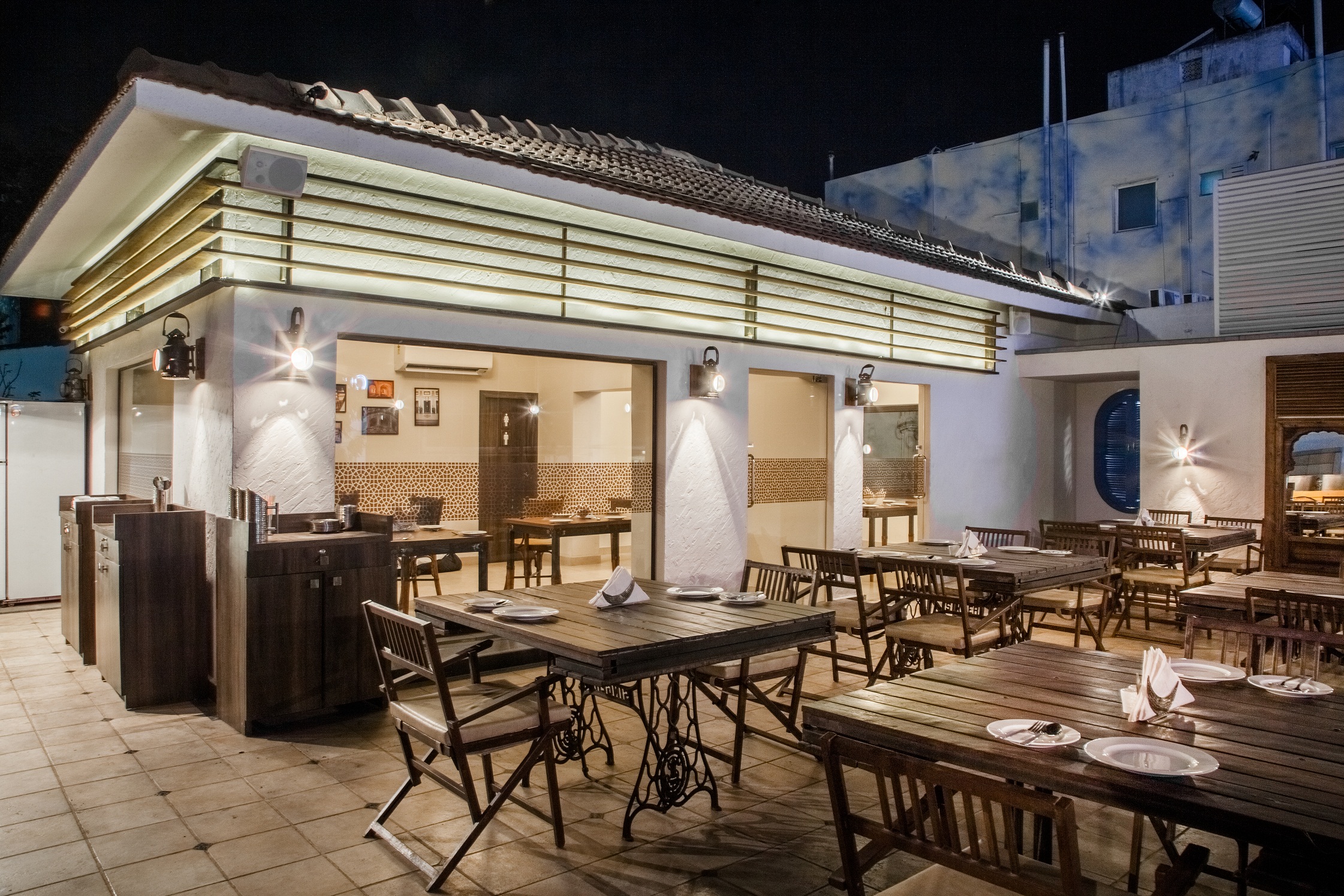
Eatopian Chronicles was invited to a bloggers table recently one evening to the launch of Kebab Stories, which was hosted by the warm and articulate Pradeep Khosla, CEO and Corporate Chef of Food Krafters.
“This concept has been on my mind for many years and this restaurant is a labor of love and its menu is inspired from my travels to Punjab, Pakistan and Afghanistan – from Gawalmandi in Lahore, Namak mandiand Qissa Khawani Bazaar in Peshawar, Burns Road in Karachi and the streets of Kabul. There is a story behind each kebab, like how they originated and why they are so popular. We have created these kebabs using original recipes from these regions and adapting it to suit the Indian palate,” shares chef Khosla.
On our plates that evening was quite obviously a host or rather galaxy of kebabs, mostly lamb and chicken, culled from different regions of the Indian subcontinent. We started off with Murgh Chaamp Bemisaal, chicken breast in a mild yoghurt marinade stuffed with cheese and nuts, and cooked on a slow fire in a tandoor…any guesses how divine that would be?
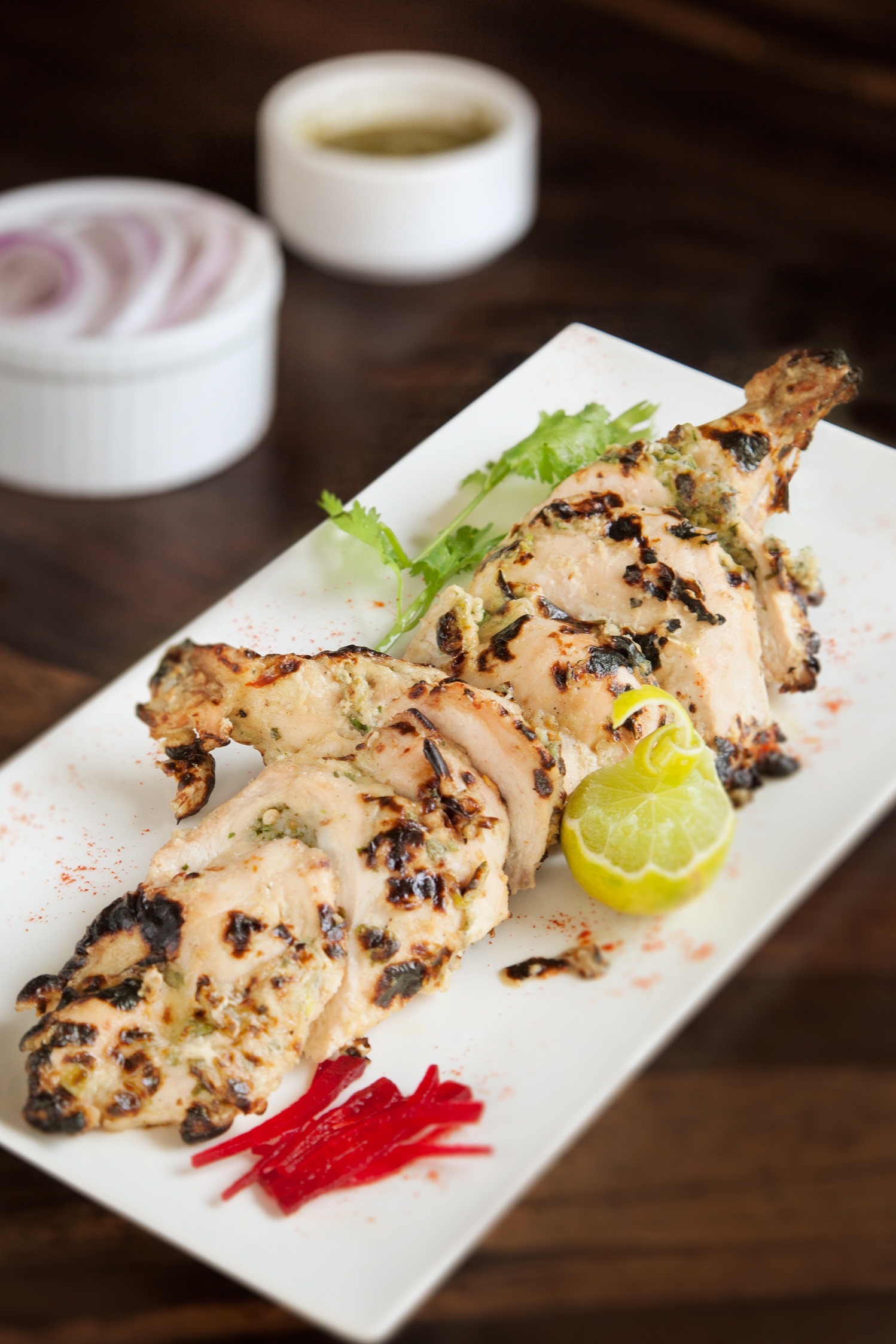
Murgh Chaamp Bemisaal
Mutton Shifta Sheekh was next, mutton seekhs with cheese, saffron and spinach as well as a host of other aromatic ingredients added.
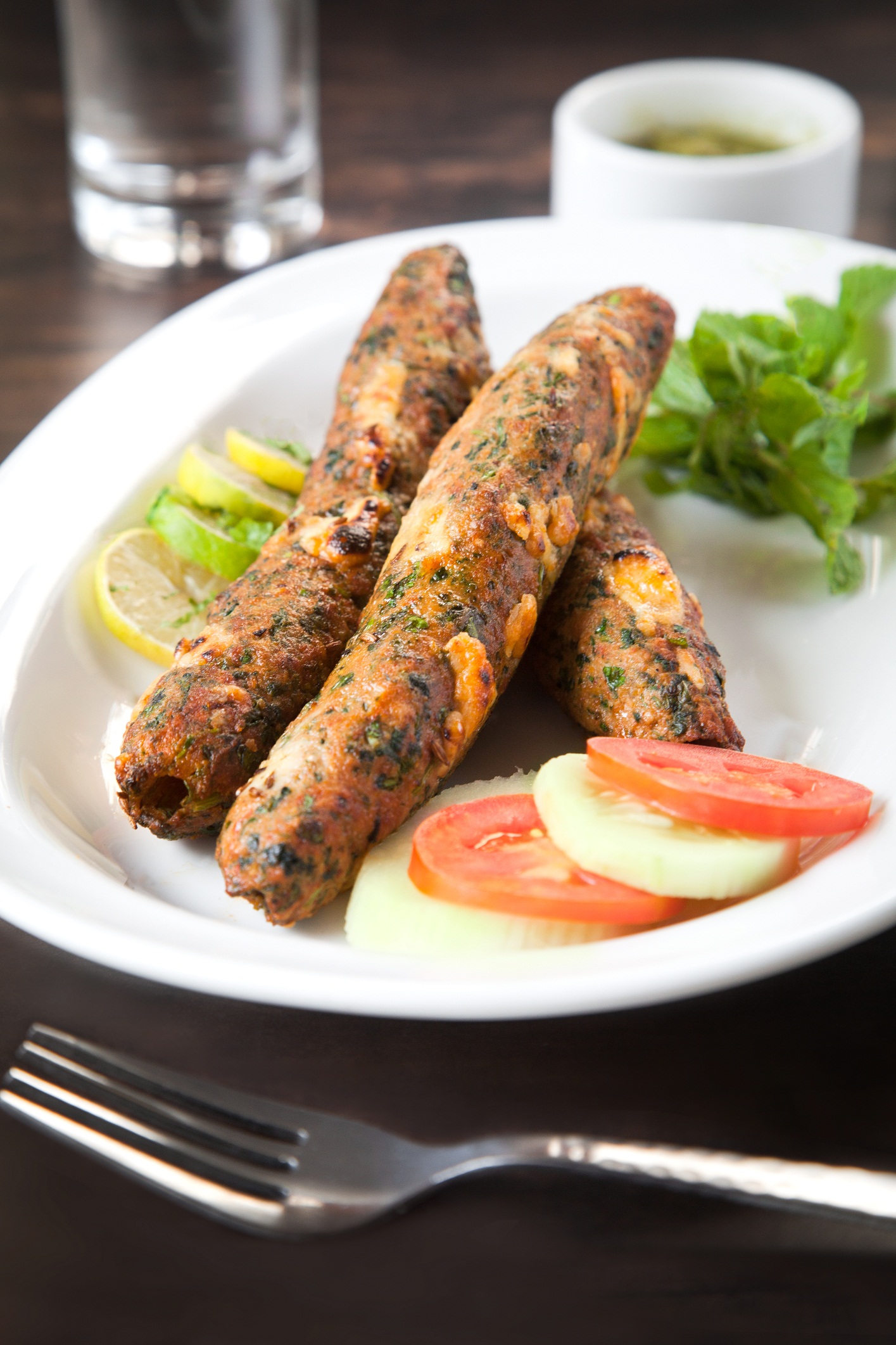
Mutton Shifta Seekh
From the sigree came Kukkad Til Tinka, boneless chicken leg in a Kashmiri red chilli marinade and coated with sesame seeds. While the chicken was grilled well, the sesame seeds were a wee bit too toasted to give it the required crunch and texture.
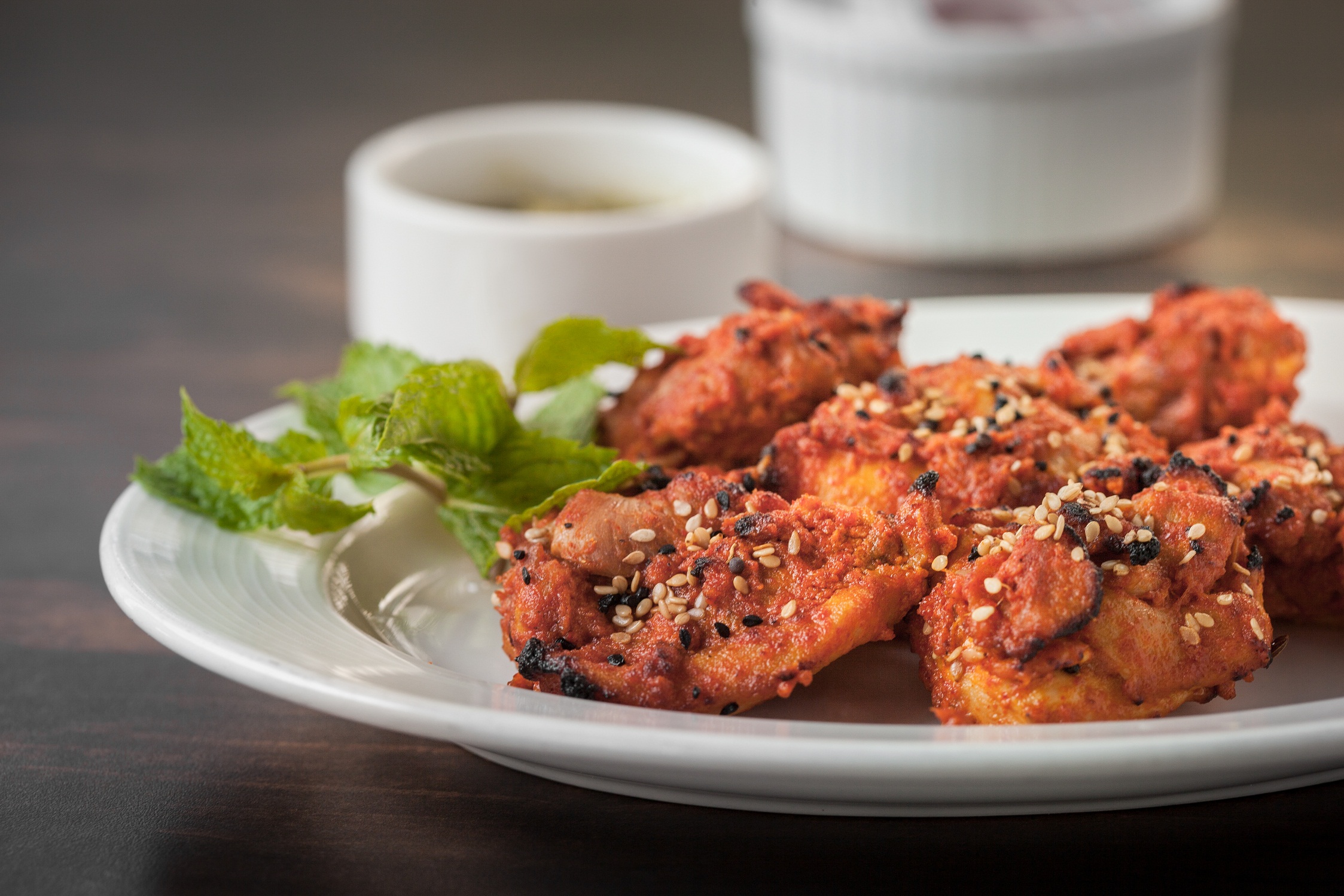
Kukkad Til Tinka
Lahori Kacche Gosht ki Kadhai, lamb cooked in an onion tomato gravy, a signature special of Gawalmandi from the streets of Lahore, is served next and all of us are takers for the wonderfully aromatic dish,
From the Thati section of the menu we try Aloo Gosht Barra, tender mutton cubes and potatoes slow cooked with garam masala and spices and served on a naan with a salad on the side, as well as a chef’s special sauce to be dipped into, at will. “It is a whole robust, filling meal by itself and is a speciality from the Pind region of Pakistan. We have plated it at Kebab Stories to serve four persons,” shared chef Khosla.
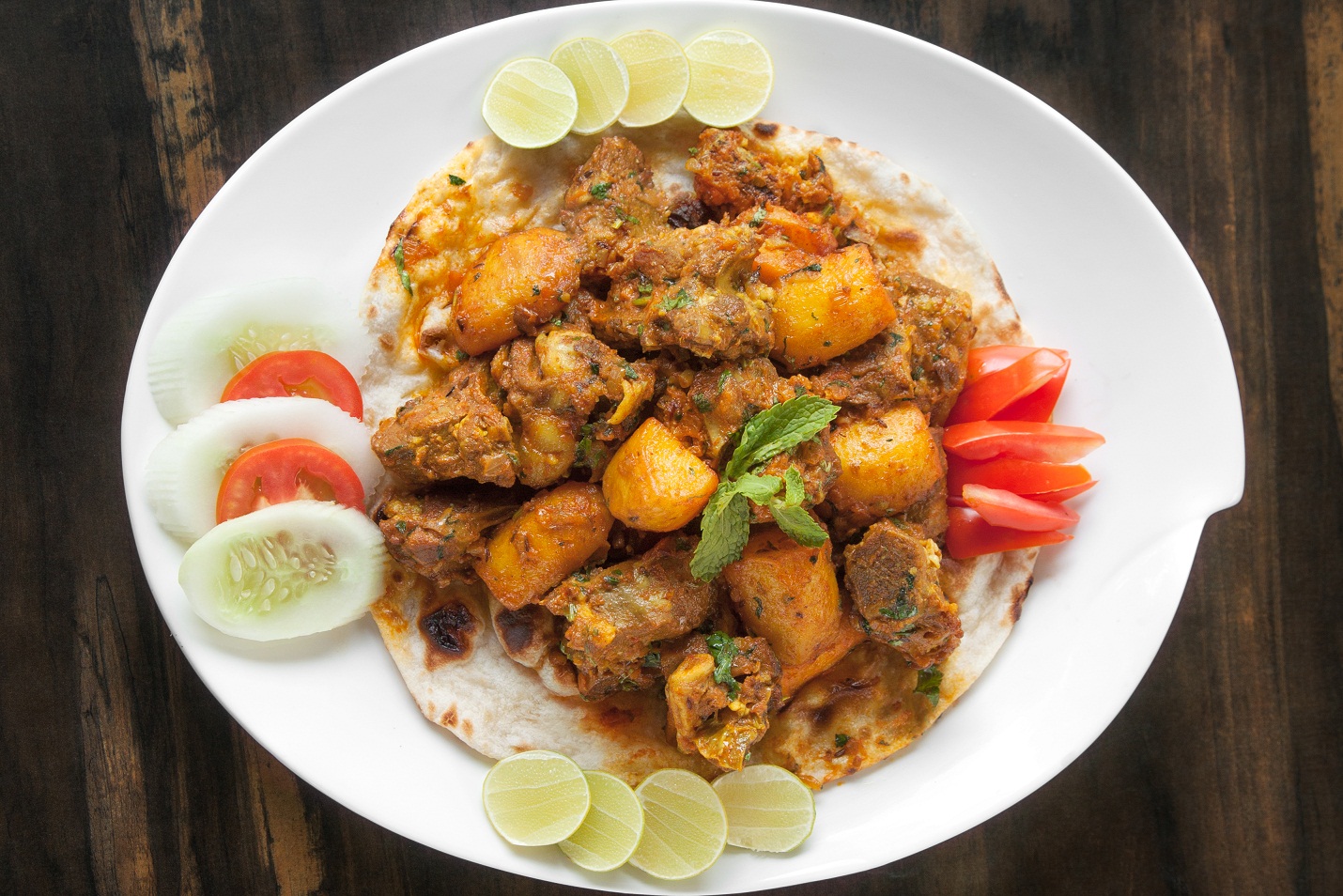
Aloo Gosht Burra
Murgh Kandahari, Dahi Walle Paaye and Rogani Bhuni Nalli followed next. The first is a whole chicken (with skin) seasoned subtly and slow cooked , served again with a salad and a special sauce. The serving size is again good for two to three persons. Dahi Walle Paaye, a Hyderabadi speciality with lamb trotters slow-simmered in a full-bodied broth and topped with yoghurt, browned onions and greens, turned out to be quite good too. The serving suggestion is interesting: Rs 1200 for half a dozen trotters and Rs 2200 for a dozen. I also tried a spoonful of the fiery red Rogani Buni Nalli and was rewarded with a rich taste on the palate. Apparently, the recipe used is straight from the kitchens of Maharaja Ranjit Singh.
Keeping us good if not too spirited company is a bottle of red nonalcoholic red wine (yes, apparently just like decaff coffee, there is de-alcoholised wine!), from Billabong (australia), and it is quite a winner with its astringently fresh taste of grape pulp and skin, and without the sharp acidity of red wine, the afternotes being reminiscent of red\black grapes.
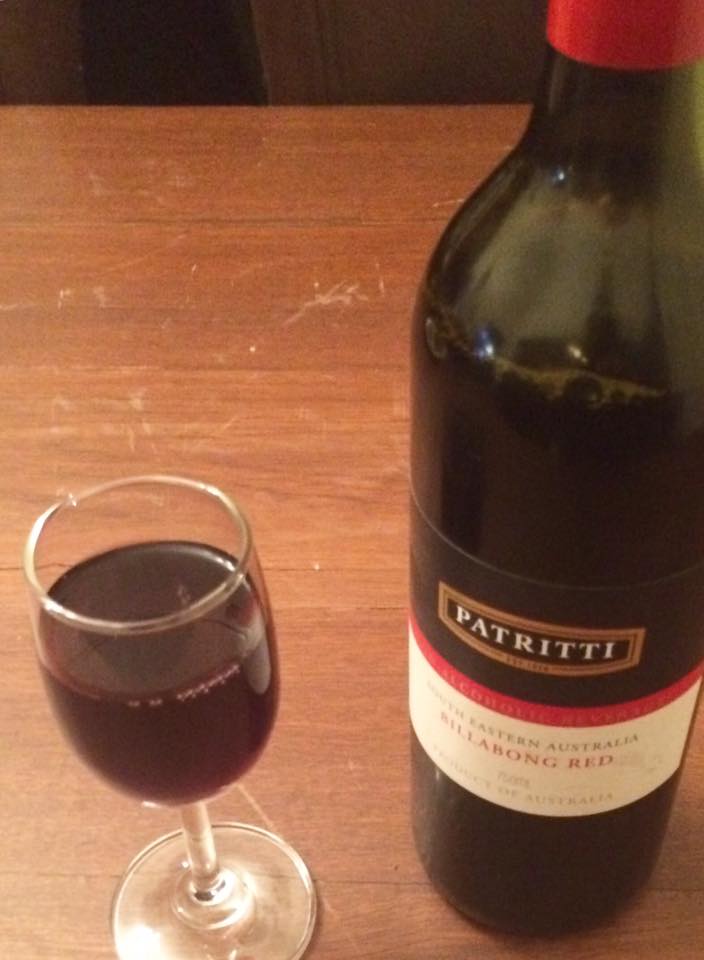
Billabong Red Wine
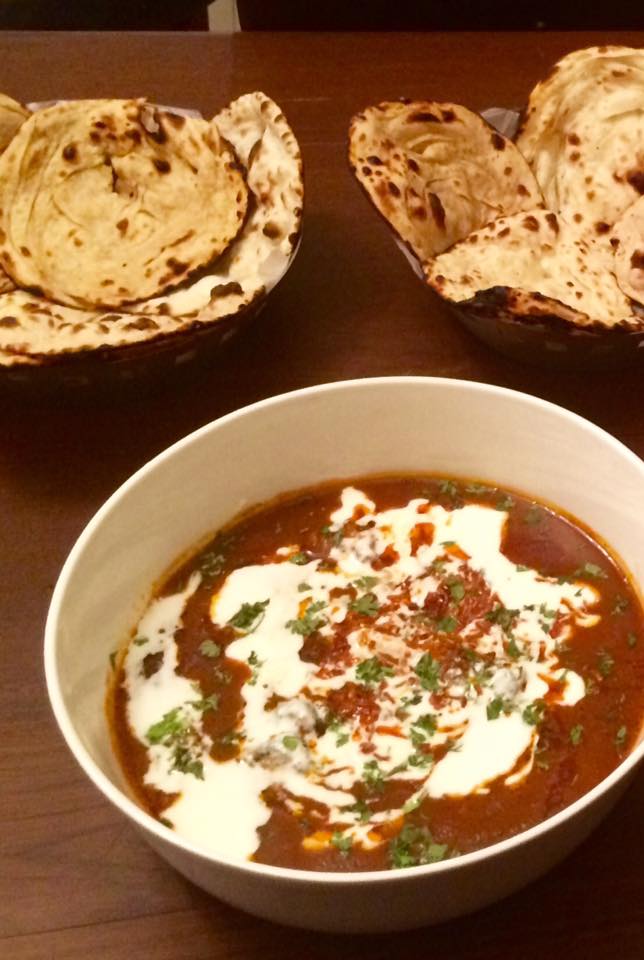
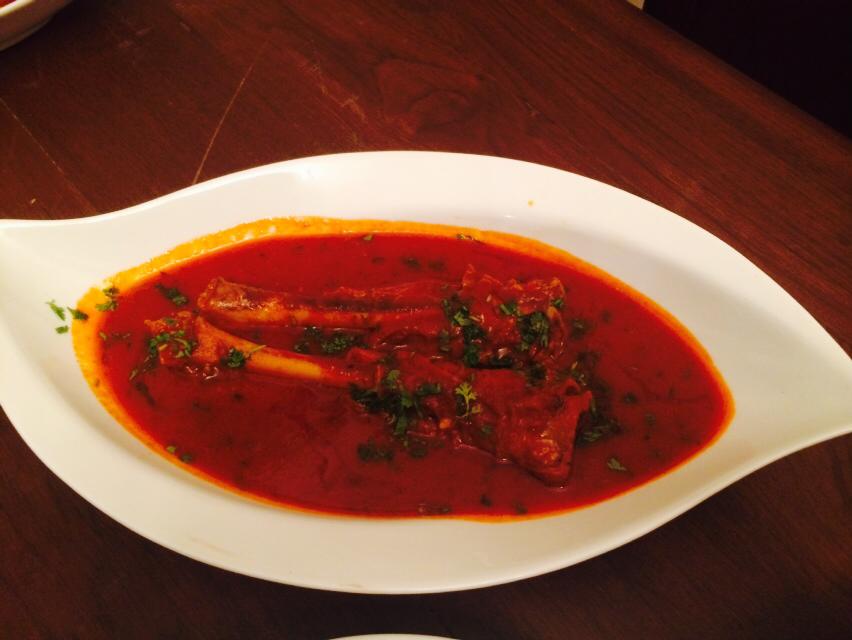
Rogani Bhuni Nalli
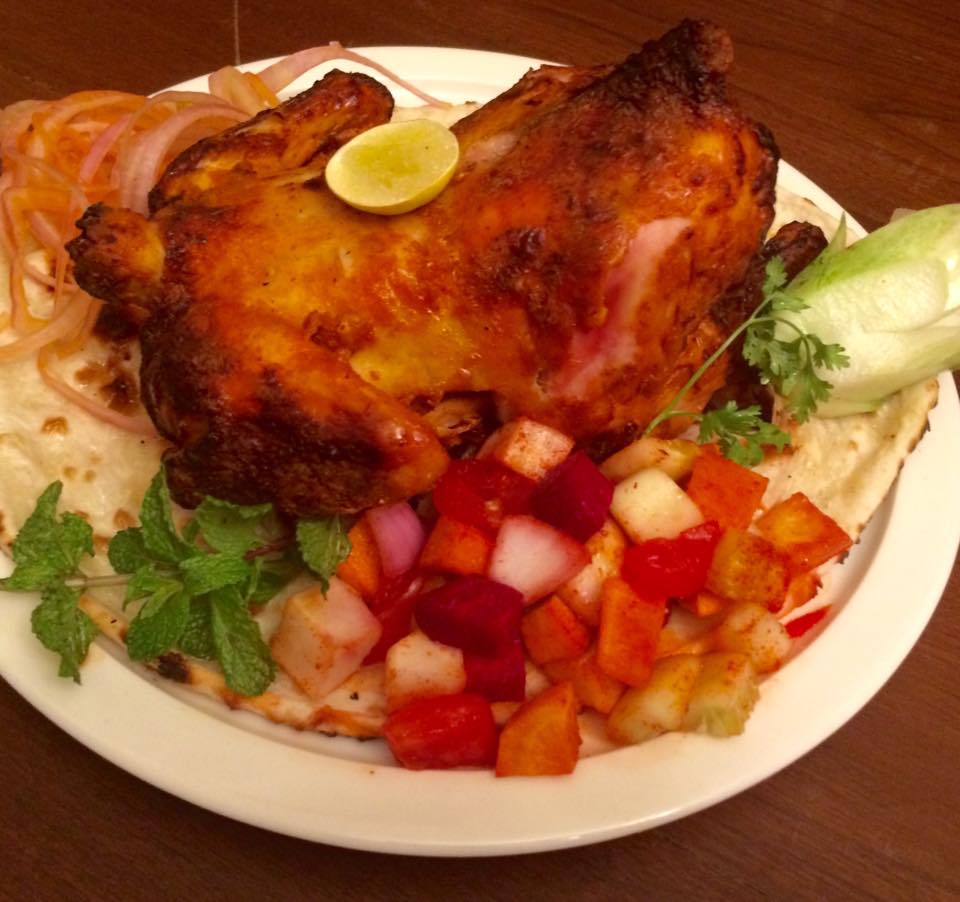
Murgh kandahari
With the kebabs and curries we are served a bread basket with sheermal, tandoori rotis, keema kulcha etc. There are many other meat preparations from The Tawa section of the menu which chef Khosla sends to our table, and a spot of Hyderabadi kacchi gosht ki biryani, but which dont necessarily follow to my over stuffed stomach, as my capacity for eating meat in one single sitting has far been surpassed. I find names being bandied around, Kheema Gurda Khaleji Tak-A-Tak, Kheema Anda Ghotala, Bheja Masala etc.
Last, but not the least, come the desserts and they impress with their refreshingly different avatar. So, even while being of the heavy-duty milk-ghee-nuts genre, they turn out to be quite light actually and contemporarily plated. We try Halwa Puri, ok there is nothing light about this sooji halwa delight served on gigantic sized pooris, more like bhaturas, and apparently is the Punjab (the Pakistani province) speciality. There is also Leb-E-Shireen from Lahore, made of reduced milk and fresh fruits and topped with jelly.
What I like immensely, however, is Gulathi, again a royal dessert from Punjab (the same Pakistani one) made of thickened reduced milk cooked along with rice, saffron and dry fruits and garnished with crunchy pistachios and nuts, decorated with silver varq and served chilled. I found it to be an upgraded version of the more humble phirni, with regard to both texture and taste.
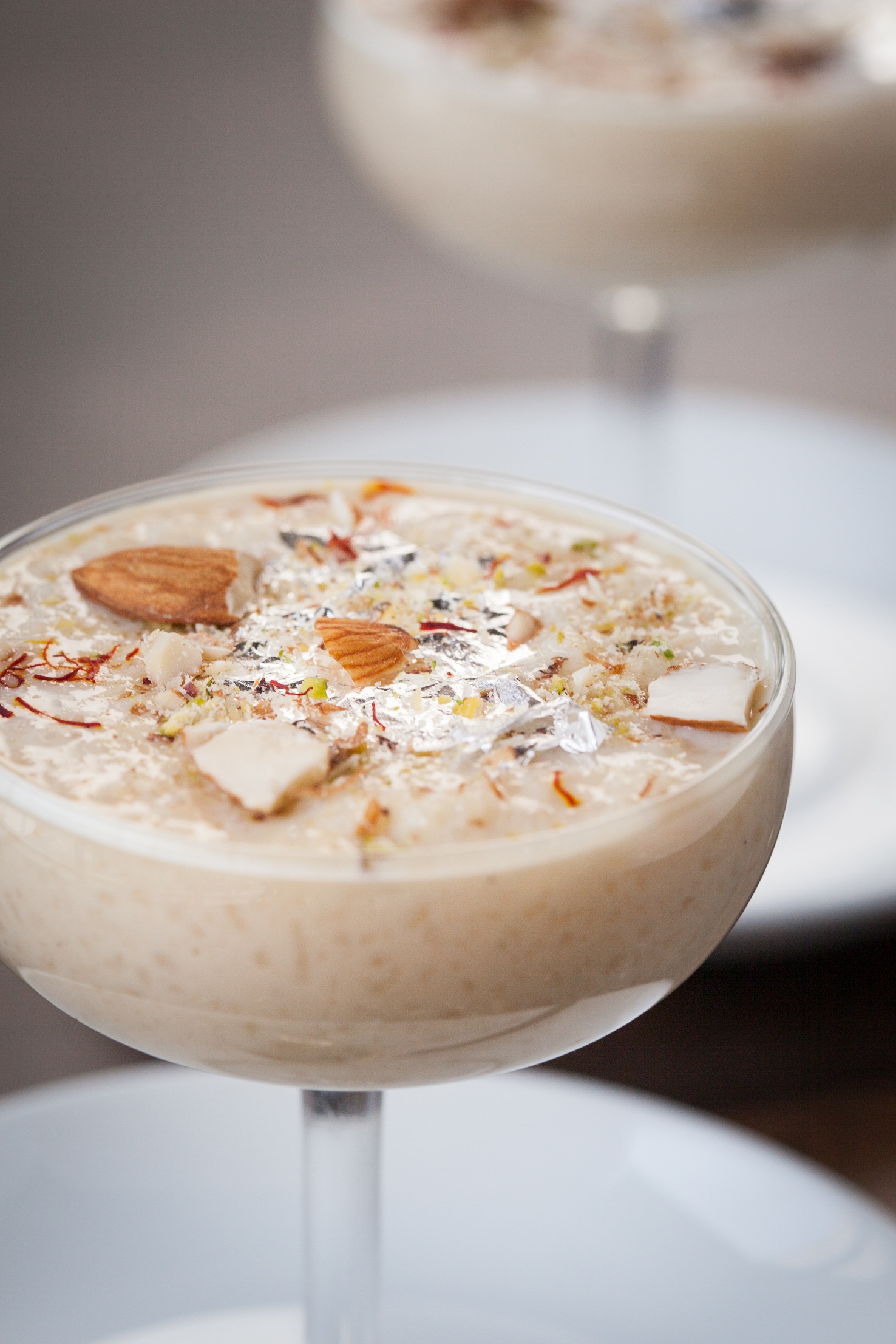
Gulathi
Suffice it to say that this was easily one of the best desserts I have had in a long time. I make a mental note of definitely finishing the Leb E Shireen next time as one spoonful of any dessert doesnt do any justice to the dish, does it now?

